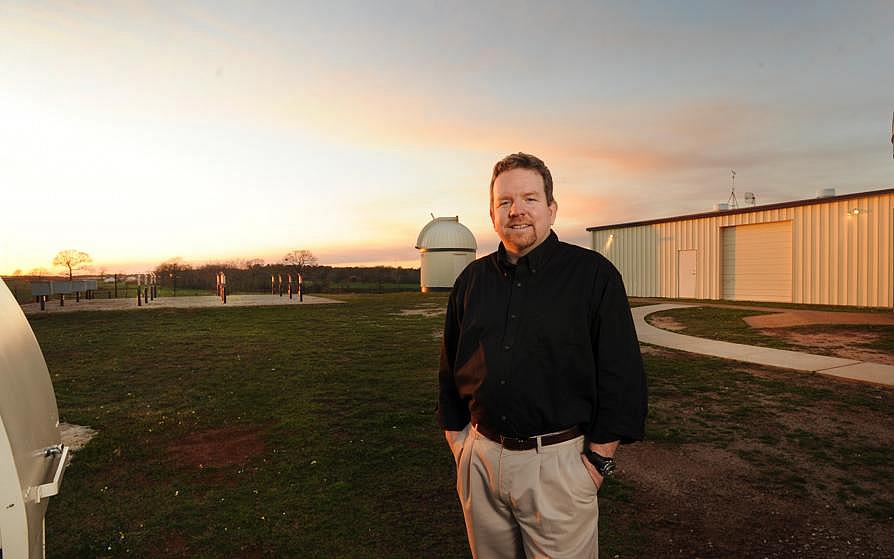Active faculty members
Being a good professor doesn’t just mean standing up in front of your students and delivering the same lecture, year after year after year. It means getting your hands dirty and continuing to conduct research in your field.
At SFA, our professors like to take the hands-on approach. Our commitment to providing students with the best possible education is strengthened by the time our professors take to further their chosen fields of study – often involving their students along the way.
The work we do
Our professors don’t just teach their subjects – they dedicate their lives to their field and spend their time conducting research and making discoveries.
The faculty members of the Department of Physics, Engineering and Astronomy have conducted research in the following areas:
- Liquids and amorphous materials
- Classical and quantum optics
- Eclipsing binary stars
- Low temperature physics
- Thin film electrodeposition
- Astronomy
- Radar signaling
- Gas dynamics
- Optical polarimetry
- Makerspaces and machine shop
The tools you need
You can’t conduct groundbreaking research without the proper facilities. At SFA, we ensure our staff has access to the state-of-the-art equipment required to perform advanced research.
Among the facilities currently available for research at SFA are:
- Super conductivity and low temperature laboratory
- Quantum optics lab
- Thin film and microscopy lab
- Observatory
- Radar signaling lab
- Gas dynamics lab
- Optical polarimetry lab
Get involved
At SFA, students have the unique opportunity to work side-by-side with their professors as undergrads. To find out more about how to get involved in helping your professors with their research, contact your faculty advisor.
Exciting research and discoveries
Researchers in the Department of Physics, Engineering and Astronomy have made the following discoveries or are involved in the following research:
- Discovered 11 asteroids (minor planets) using our research observatory
- Studies of light properties of eclipsing binary studies
- Superconducting devices, superconductive tunneling and Josephson tunneling between multiply-connected superconductors
- Studies of multi-layered thin films for use in solar cell technology and the study of genomic DNA molecules by STM and AFM on various substrates
- Using coherent light, students can explore the quantum mechanical nature of atom-photon interactions. Students may work in the field of classical optics to develop instrumentation to measure the optical properties of natural and industrial environments.
- Collaborative projects involving the departments of physics, engineering and astronomy, biology and chemistry
- Experiments using finely tuned optical-based diagnostics on reacting flows to investigate fundamental chemical reactions. Applications for this research range from advanced propellants for rockets to experimental fuels for gas turbine engines
- Studies of different signals and techniques that can be used in future radar systems that will provide higher-resolution images
- Numerical simulations of the reflection and scattering of sunlight in atmosphere-ocean systems and over land, as well as experimental determination of the intensity and polarization of light in those systems
 Axe ’Em, Jacks!
Axe ’Em, Jacks!
